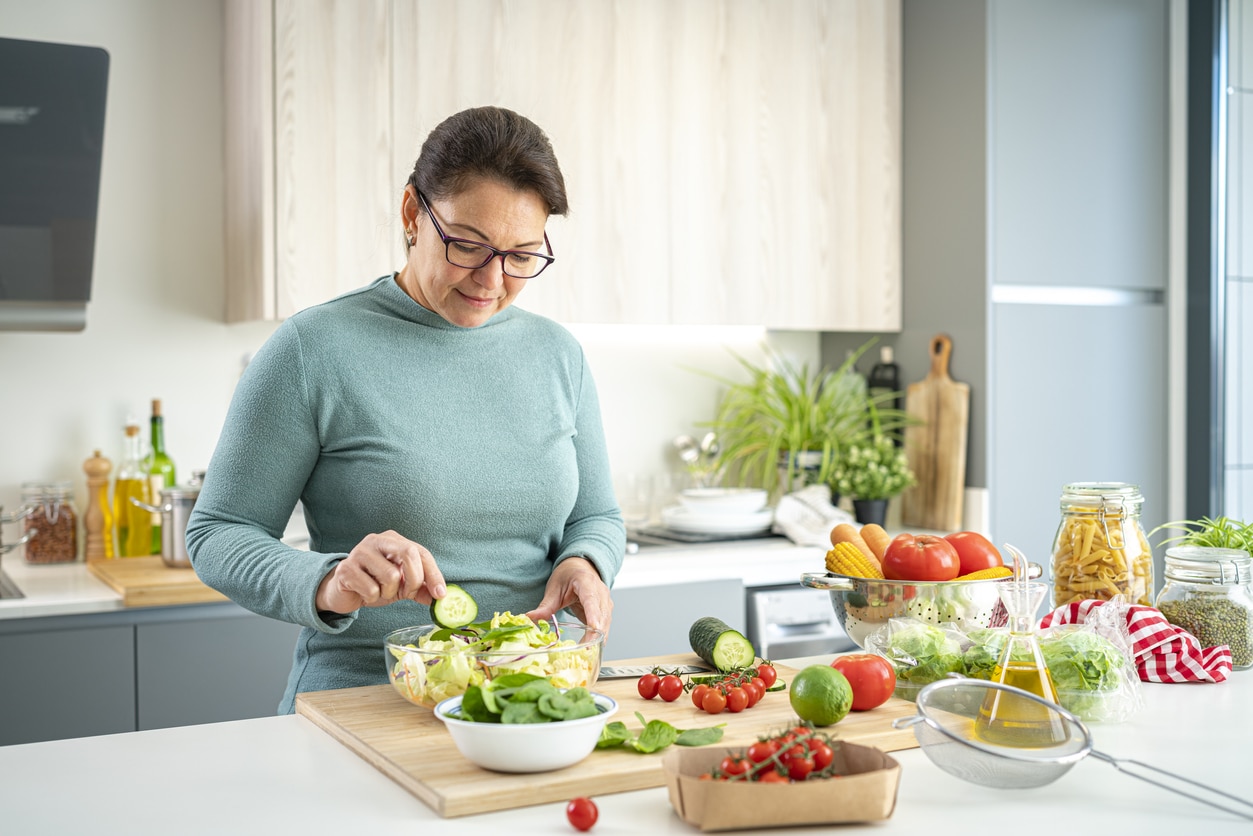Nutrition Over 50: Foods All Women Should be Eating
As we age, our body’s needs and nutrition requirements change. As a woman over 50, you have many complex needs when it comes to your nutrition. Your body has undergone several major changes, and your dietary plan must reflect that. This article will help you understand the basics of nutrition over 50, so you can make informed decisions about what foods are best for your body.
With age, your body’s metabolism slows down significantly. Therefore, it is essential to focus on nutrient-dense foods that provide the most energy with minimal calories. Additionally, as we age, our bodies become more prone to inflammation and chronic diseases; therefore, eating anti-inflammatory foods is key for optimal nutrition over 50.
Here are some of the best types of food for women over 50.
The Best Fruits and Vegetables for Nutrition Over 50
This one may seem obvious, but it’s important to eat plenty of fruits and vegetables. Fruits and vegetables contain lots of vitamins and minerals that offer anti-inflammatory benefits while also providing essential nutrients like fiber that help keep digestion regular. Focusing on eating both fruits and vegetables in a variety of colors will guarantee that you get all the vital nutrients necessary for optimal health.
Here are some of the best fruits and vegetables to have in your diet:
- Apples: Apples are full of antioxidants, dietary fiber, vitamin C, flavonoids, and phytonutrients that can help reduce the risk of developing cancer, hypertension, diabetes, and heart disease. They also contain pectin, which can reduce bad cholesterol levels in the blood.
- Sweet Potatoes: Sweet potatoes provide an abundance of vitamins A and C, as well as potassium and iron. They also contain a significant amount of dietary fiber, which helps keep digestion running smoothly and provides additional protection against heart disease.
- Kale: Kale is packed with iron and calcium, which is especially beneficial to women over 50 who may be at risk for osteoporosis or anemia. Kale is also high in vitamin K, which helps maintain bone density while preventing inflammation throughout the body. It contains lutein which increases eye health – a particular concern for aging adults – as well as sulforaphane, a phytochemical that has been linked to cancer prevention.
- Berries: Berries are a great snack option because they are low in calories but still contain plenty of vitamins and antioxidants.
- Avocados: Avocados are an excellent source of healthy fats that help keep our skin youthful looking while also providing essential nutrients like vitamin E, B vitamins, and potassium.
The Whole Grains for Top Nutrition
Whole grains are unrefined grains that are left intact after being processed. They contain the entire grain seed – the bran, endosperm, and germ – whereas refined grains have had one or more parts removed. Whole grains are packed with fiber, vitamins, and minerals that refined grains do not contain. The fiber helps to slow down digestion, which in turn stabilizes blood sugar levels and helps you feel full longer.
Here are some of the best whole grains to have in your diet:
- Whole Wheat Bread and Pasta: Whole wheat bread and pasta are excellent sources of fiber, B vitamins, and protein. They help with digestion and can help lower cholesterol levels. Additionally, the complex carbohydrates in these foods will give you sustained energy throughout the day, so you won’t need to rely on sugary snacks for a quick burst of energy.
- Oats: Oats are a great source of fiber and contain compounds that may reduce cholesterol levels.
- Brown Rice: Brown rice is also high in fiber and contains selenium, an antioxidant necessary for cell function. Quinoa is packed with protein and iron and has been shown to improve blood sugar regulation in those with type 2 diabetes.
- Barley: Barley contains beta-glucan (a type of soluble fiber), which helps lower cholesterol levels while providing sustained energy throughout the day.
- Quinoa: Quinoa is an ancient grain that has become increasingly popular in recent years due to its nutritional benefits. This grain is high in fiber, magnesium, iron, zinc, phosphorus, and B vitamins – all of which can help protect against chronic diseases like heart disease or type 2 diabetes. It also has more protein than other grains, making it an excellent choice for vegetarians or vegans looking to get more plant-based protein into their diets.
Top Protein Sources for Healthy Eating
Protein is an important macronutrient your body needs every day, especially as you age. It helps keep muscles strong and functioning properly. Protein-rich foods are also excellent sources of iron which helps carry oxygen throughout the body – an especially important benefit after menopause when women’s iron stores tend to decrease due to hormonal changes. You should strive to get protein from lean sources rather than red meat, which can be high in saturated fat content leading to inflammation in the long run.
Here are some of the best protein sources to have in your diet:
- Eggs: A single large egg contains 6 grams of protein and is rich in essential vitamins and minerals such as vitamin D, zinc, selenium, choline, and biotin. Eggs are also packed with antioxidants which can help reduce inflammation, improve heart health, and regulate blood sugar levels.
- Fish: Fish is one of the best sources of lean protein available. It’s also high in vitamins and minerals like omega-3 fatty acids, which promote heart health and reduce inflammation. Fish like salmon and tuna are also high in vitamin B12, which helps keep the nervous system healthy.
- Nuts and Seeds: Nuts and seeds are another great source of protein for women over 50 because they are packed with essential fatty acids which help protect against chronic diseases like heart disease or stroke.
- Beans and legumes: Beans and legumes are a great source of protein for women over 50. Not only do they contain protein, but they also contain high amounts of fiber, iron, magnesium, potassium, zinc, and B vitamins. All of these nutrients help keep your blood sugar balanced and lower cholesterol levels.
Choose the Right Options For You
Eating right isn’t about restriction or deprivation – it’s about making mindful choices that will fuel your body with the nutrients it needs. Focusing on nutrient-dense whole foods like fruits and veggies paired with lean proteins and whole grains can help ensure that you get all the nourishment necessary without feeling deprived while still maintaining a balanced diet overall. By understanding these key principles of nutrition over 50, you can make informed decisions about what foods are best for you.
Read More:
Which Fruits Have the Most Sugar? Check Out the Top 5
How Much Protein Do You REALLY Need?
8 Glorious Gluten-Free Grains To Try Today
The post Nutrition Over 50: Foods All Women Should be Eating appeared first on Prime Women | An Online Magazine.
Did you find this post inspiring? Let us know by pinning us!



